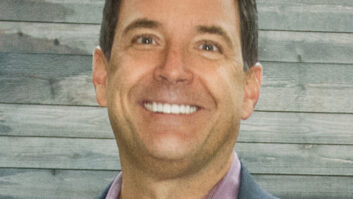The work is focusing on the distance conferencing classrooms that are located on each UW College campus and enable students to gain greater access to instructors with specific skills. The first phase was due to be completed in September, with a second phase set to reach fruition next summer.
“In nearly every conferencing room we’ve installed a single Nexia VC alongside a Nexia TC to facilitate both teleconferencing and videoconferencing with Biamp’s TrueSound AEC capabilities,” said Bouffleur, who is UW Non Online Distance Education (NODE) Coordinator. “In rooms with more than eight microphones we’re using two Nexia VC units with a single Nexia TC. So far the installation has progressed very smoothly and we’re quite pleased with the performance of the Nexias.”
The Nexia VC processors interface with Polycom video codecs to aggregate incoming audio, and mix and route those signals accordingly. A number of difference source inputs to select from at the podium – including a computer input, a DVD player and a CD player – are available in each room. The Nexias are being used in conjunction with Crestron control systems, which are also being upgraded as part of this extensive project.
“With these new Biamp and Crestron components we can access all of our system settings via IP and we can upload new configurations quickly and remotely, saving us a lot of time and energy by not having to visit each campus separately,” added Bouffleur.
Biamp Systems vice-president, international sales Graeme Harrison told II: “The successful application of Biamp’s Nexia technology at the University of Wisconsin underscores not simply the technical performance of Biamp’s Nexia, but how AV professionals like Scott Bouffleur can apply the technology to meet the performance, budgetary and application requirements of a project, and also provide a scalable solution that lays the groundwork for future development. We’re pleased to work with Scott and our European integration partners to build the products that make them successful and their clients more effective communicators.”







